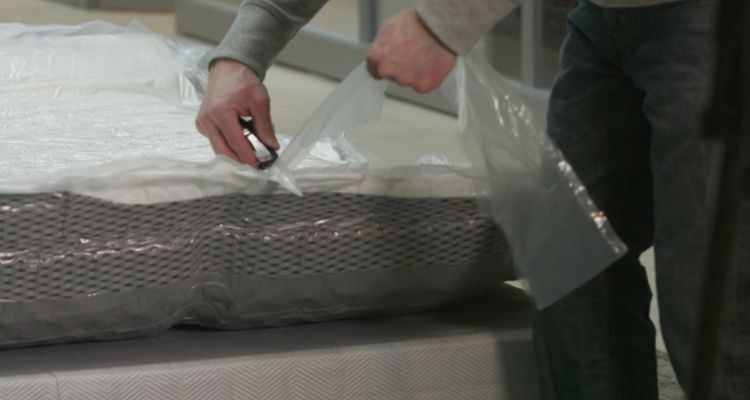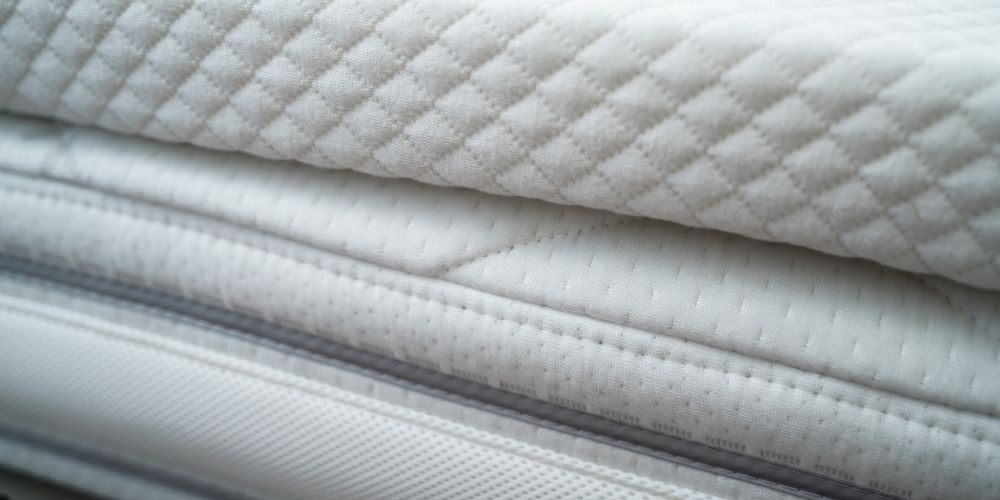Foam Mattress Topper Toxicity: What You Need to Know
Mattress toppers have become increasingly popular in recent years as a cost-effective way to improve the comfort and support of a mattress. However, there have been growing concerns about the potential toxicity of foam mattress toppers. In this article, we will delve into the topic and explore whether foam mattress toppers become toxic over time and what you can do to ensure a safe and healthy sleeping environment.
How Long Do Foam Mattress Toppers Last?
The lifespan of a foam mattress topper depends on various factors such as the quality of the materials used, the frequency of use, and how well it is maintained. On average, a foam mattress topper can last anywhere from 2-5 years. However, over time, it is possible for the materials to break down and release toxic chemicals into the air.
The Dangers of Chemical Flame Retardants in Foam Mattress Toppers
One of the main concerns about foam mattress toppers is the use of chemical flame retardants. These chemicals are added to the foam to meet safety standards and prevent the spread of fire. However, they have been linked to various health issues, including hormone disruption, developmental and reproductive problems, and even cancer.
How to Tell If Your Foam Mattress Topper is Toxic
Some foam mattress toppers may come with a strong chemical smell, which is an indicator of the presence of toxic chemicals. If you notice a strong odor, it is best to air out the topper for a few days before using it. You can also check the label or contact the manufacturer to inquire about the materials used in the topper.
Understanding Off-Gassing in Foam Mattress Toppers
Off-gassing is the process of releasing chemicals into the air as a result of a product's materials breaking down. This is a common occurrence in foam mattress toppers, especially those made with synthetic materials. Off-gassing can cause headaches, nausea, and respiratory issues, particularly for those with sensitivities.
Eco-Friendly Alternatives to Foam Mattress Toppers
If you are concerned about the potential toxicity of foam mattress toppers, there are several eco-friendly alternatives available. Natural latex, cotton, and wool toppers are all-natural and do not contain harmful chemicals. They are also biodegradable, making them a more sustainable choice for your sleep environment.
The Importance of Choosing a Non-Toxic Foam Mattress Topper
Considering that we spend a significant portion of our lives sleeping, it is essential to prioritize our health and well-being when it comes to our bedding. Choosing a non-toxic foam mattress topper can help reduce exposure to harmful chemicals and promote a healthier sleep environment. It is also a more environmentally responsible choice.
How to Properly Dispose of a Toxic Foam Mattress Topper
When it is time to replace your foam mattress topper, it is crucial to dispose of it properly. Simply throwing it in the trash can be harmful to the environment. Instead, check with your local recycling center to see if they accept foam materials. You can also contact the manufacturer to inquire about their recycling or disposal program.
The Effects of Long-Term Exposure to Toxic Foam Mattress Toppers
Exposure to toxic chemicals in foam mattress toppers over a long period can have severe consequences on our health. These chemicals can accumulate in our bodies, leading to various health issues, including respiratory problems, skin irritation, and even neurological disorders. It is essential to address the issue and make changes to promote a healthier sleeping environment.
Tips for Maintaining a Non-Toxic Foam Mattress Topper
To ensure a longer lifespan for your non-toxic foam mattress topper, it is crucial to maintain and care for it properly. Regularly airing it out and spot cleaning any stains can help prevent the buildup of bacteria and mold. You can also use a protective cover to prevent any spills or stains and extend the life of your topper.
In conclusion, while foam mattress toppers may offer comfort and support, it is crucial to be aware of the potential toxicity of these products. By understanding the risks and choosing non-toxic alternatives, we can create a healthier and more sustainable sleep environment for ourselves and our loved ones.
Why You Should Consider Replacing Your Foam Mattress Topper

The Potential Toxicity of Foam Mattress Toppers
 One of the main reasons people opt for foam mattress toppers is their ability to provide additional comfort and support to an existing mattress. However, as with any product, there are concerns about potential toxicity over time.
Recent studies have shown that foam mattress toppers can release harmful chemicals into the air, posing health risks for individuals who use them regularly.
These chemicals, such as formaldehyde and volatile organic compounds (VOCs), are commonly used in the production of foam and can have negative effects on respiratory and nervous systems.
One of the main reasons people opt for foam mattress toppers is their ability to provide additional comfort and support to an existing mattress. However, as with any product, there are concerns about potential toxicity over time.
Recent studies have shown that foam mattress toppers can release harmful chemicals into the air, posing health risks for individuals who use them regularly.
These chemicals, such as formaldehyde and volatile organic compounds (VOCs), are commonly used in the production of foam and can have negative effects on respiratory and nervous systems.
The Effects of Long-Term Exposure
 While the initial release of these chemicals may not be harmful,
the continuous use of a foam mattress topper can lead to a buildup of these toxins in your bedroom environment.
This is especially concerning for individuals who are particularly sensitive to chemicals or have pre-existing respiratory conditions. Long-term exposure to these chemicals can cause headaches, dizziness, and even contribute to the development of chronic illnesses.
While the initial release of these chemicals may not be harmful,
the continuous use of a foam mattress topper can lead to a buildup of these toxins in your bedroom environment.
This is especially concerning for individuals who are particularly sensitive to chemicals or have pre-existing respiratory conditions. Long-term exposure to these chemicals can cause headaches, dizziness, and even contribute to the development of chronic illnesses.
The Importance of Proper Maintenance
 Toxicity concerns aside, even a high-quality foam mattress topper will eventually wear out and lose its ability to provide proper support and comfort.
It is recommended to replace your foam mattress topper every 2-3 years to ensure you are getting the best possible sleep and avoiding potential health risks.
Additionally, proper maintenance can also help prolong the life of your topper and reduce the risk of chemical buildup. Regularly flipping and rotating your topper can help distribute weight evenly and prevent premature wear.
Toxicity concerns aside, even a high-quality foam mattress topper will eventually wear out and lose its ability to provide proper support and comfort.
It is recommended to replace your foam mattress topper every 2-3 years to ensure you are getting the best possible sleep and avoiding potential health risks.
Additionally, proper maintenance can also help prolong the life of your topper and reduce the risk of chemical buildup. Regularly flipping and rotating your topper can help distribute weight evenly and prevent premature wear.
Alternative Options for a Healthy Sleep Environment
 If you are concerned about the potential toxicity of a foam mattress topper, there are alternative options available.
Consider investing in a natural or organic mattress topper made from materials such as latex or wool, which are known for their durability and non-toxic properties.
These options may come at a higher cost, but the peace of mind and long-term health benefits may be worth it.
In conclusion, while foam mattress toppers can provide added comfort and support, it is important to be aware of the potential toxicity risks associated with their prolonged use.
Regularly replacing your foam topper and considering alternative non-toxic options can help ensure a healthy and restful sleep environment for you and your loved ones.
Don't sacrifice your health for a few extra years of use – make the switch to a safer and more sustainable sleep solution.
If you are concerned about the potential toxicity of a foam mattress topper, there are alternative options available.
Consider investing in a natural or organic mattress topper made from materials such as latex or wool, which are known for their durability and non-toxic properties.
These options may come at a higher cost, but the peace of mind and long-term health benefits may be worth it.
In conclusion, while foam mattress toppers can provide added comfort and support, it is important to be aware of the potential toxicity risks associated with their prolonged use.
Regularly replacing your foam topper and considering alternative non-toxic options can help ensure a healthy and restful sleep environment for you and your loved ones.
Don't sacrifice your health for a few extra years of use – make the switch to a safer and more sustainable sleep solution.





























































:max_bytes(150000):strip_icc()/SleeponLatex-b287d38f89374e4685ab0522b2fe1929.jpeg)






































